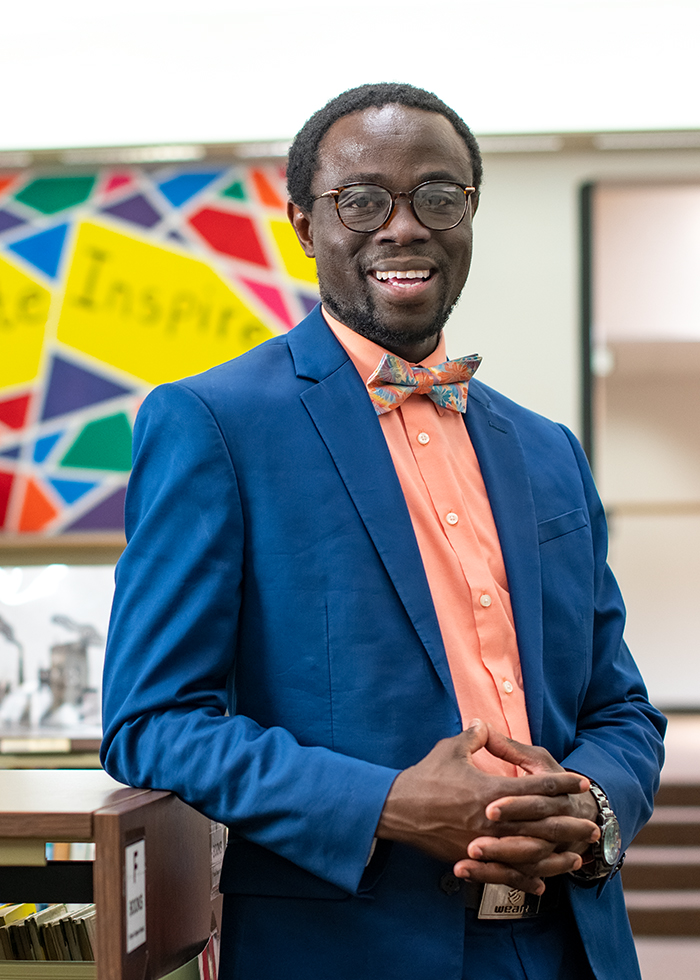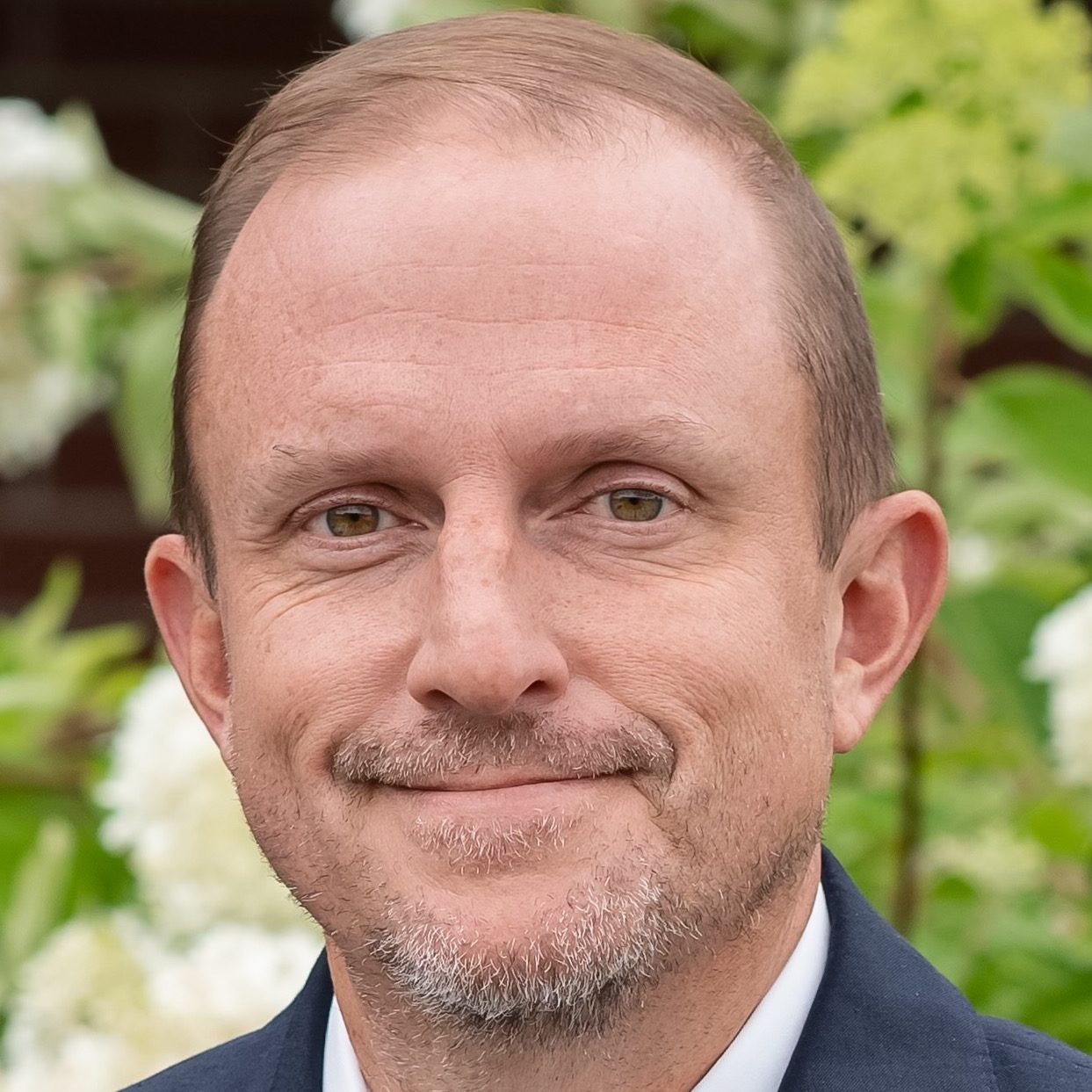Principals have been at the forefront of rallying students, staff members and their wider school communities throughout the upheavals of the COVID pandemic.
Over the last two turbulent and uncertain years, they’ve found new ways to engage parents in education, turn around underperforming schools, engage students in conversation about bias and racism, and maintain contact with their communities during the most difficult phases of the pandemic.
District Administration recently caught up with four principals who are setting new standards for building leadership.
More learning at home
Edgardo Castro, Lincoln Elementary School
Gallup-McKinley County Schools, New Mexico
Edgardo Castro created parent-teacher academic teams about three years ago. His goals were to boost engagement among the residents of his rural, multilingual community and increase the amount of learning taking place at home. The teams, which meet multiple times during the school year, use test data to identify the skills students are struggling with most—such as fluency in the younger grades. Parents, many of whom are low-income, learn reading and math games they can play with their children to better develop those skills.

Castro is now using prizes and other incentives to reach his goal of having 70% to 80% of parents participate. “It has been very ideal for providing support at home for every family and every student,” says Castro, who was named the 2021 New Mexico principal of the year by the National Association of Elementary School Principals.
The teams have also been instrumental in embedding a social-emotional learning program across the school, which serves universal free and reduced lunch and is 50% Native American. The SEL curriculum prioritizes healthy interpersonal relationships, teamwork and collaboration. The effort has improved attendance and decreased behavioral problems and is now helping educators identify and address the mental health issues the pandemic has inflicted on students. “We were able to do deep dives into what students really need emotionally right now,” Castro says. “That is just crucial as we move into a post-pandemic school year.”
Another priority is having students make steady progress in the four language domains—speaking, listening, reading, and writing—and encouraging teachers to find innovative ways to instill these skills. Part of that mission is a new commitment to data-driven instruction and involving the community in the decision-making progress around the school’s multi-tiered systems of support, behavioral interventions, and whole child philosophy.
Looking ahead to what Castro hopes will truly be a post-pandemic school year in 2022-23, one of his biggest goals is to build on the most positive behaviors students and staff have shown over the last two years. “Kids really have that resilience in them, and that’s one of the skills they can carry with them when they move on from Lincoln,” Castro says. “I believe we have the growth mindset to go with our values of respect, responsibility, and resourcefulness.”
Letting teachers lead
Bertine Bahige, Rawhide Elementary School
Campbell County School District, Wyoming
When Bertine Bahige arrived at rural Rawhide Elementary six years ago, the Title I school of 100 students had not been meeting state expectations for several years. He was drawn to the little building eight miles outside of Sheridan, Wyoming, because of the challenges he has faced in his life. “I wanted to be part of a struggling school,” says Bahige, who counts English as his sixth language. “I can identify with the struggles students experience on a daily basis. I can relate to having to pay really hard attention to understand what the teacher is sharing in the classroom. I can relate to the frustration of having to repeat yourself multiple times to convey something.”

He was also determined to establish longevity and stability in his role to boost staff morale and build the school’s sense of community. He calls the latter goal the “pathway to success” because it has blended caring for students with high academic expectations.
“I am the poster child for teachers believing in me,” says Bahige, who was a 2021 Wyoming principal of the year. “We may not change students’ current situations but the academic tools we give them can change their trajectory moving forward.”
The school is now meeting state expectations and exceeding them in some categories. Bahige and his staff also continue to make progress on increasing attendance and reducing major behavioral incidents. These achievements are the result of letting teachers, through their professional learning communities, take the lead in building a structure to support student achievement at every step. Teachers have formed WIN groups (which stands for “whatever I need”) to provide students with individualized interventions based on the learning gaps revealed by assessments and other data.
SEL and CRT in math? Why one state just rejected 50 textbooks
Rawhide Elementary also offers an intensive dual-immersion language program, which Bahige describes as running two schools at the same time. It requires paying close attention to whether students are showing constant growth and hitting key targets. It takes about five to seven years to fully acquire a new language for students learning English and those learning Spanish, he says.
Looking ahead, recovering emotionally from the ordeals of the pandemic is now at the top of Bahige’s priority list. Along with the emergence of learning gaps, he and his staff are contending with problematic student behavior that they normally wouldn’t see this late in the school year. “The good news is there are a few more Mondays until summer break,” he says. “I truly hope the rest our staff, students and families will get during summer break will rejuvenate all of us.”
Incredibly important conversations

Ted McCarthy, Sutton Memorial High School
Sutton Public Schools, Massachusetts
Until recently, when incidences of hate or intolerance occurred at Sutton Memorial High School, administrators dealt with them as one-offs. If a student brought a Confederate flag to school, the punishment was doled out accordingly. But Ted McCarthy, who has been principal of the predominantly white school for nine years, eventually realized he and his staff were not making a significant impact on student behavior. “We weren’t really dealing with the causes of the problem,” says McCarthy. “We weren’t labeling behavior as racist.”
The school adopted the Anti-Defamation League’s “World of Difference” curriculum to train staff and students to guide their peers in conversations about intolerance, hate, bias, and the true meaning of diversity. “We communicated to our community that talking about these issues was incredibly important, both for the community itself and to prepare kids for the world we live in,” says McCarthy, who was named a 2021 Massachusetts principal of the year by the National Association of Secondary School Principals. “The world looks very different than Sutton, Massachusetts.”
About 40 students are trained in the curriculum each year. Some of those went on to lead workshops on social justice at a local Connections Conference that brought students and educators from across the state looking for guidance on promoting diversity, equity and inclusion. “The goal of the work is not to shame people, because shame is not a very good motivator,” McCarthy says. “The goal is to talk to folks about things that used to happen or language they used to use that is not acceptable in 2022.”
McCarthy has also implemented an extensive internship for students to participate in during the final semester of their senior year when many kids are simply coasting through to graduation. All of the school’s seniors are participating this year, working with a local minor league baseball team, shadowing doctors at UMass Medical Medical Center, volunteering with veterans and helping out at veterinary clinics, among other activities.
More from DA: How schools are targeting safety more precisely during the latest COVID wave
Seniors consistently rank their internship as one of the most impactful K-12 learning experiences. And 90% of employers rejoin the program each year—meaning they also find value in the interns, McCarthy says.
Opening up the classroom
Ricardo Ricardo Ceceña, Valley Elementary School
Poway Unified School District, California
California schools, which have been among the most cautious during COVID, remained virtual for much of the 2020-21 school year. To maintain a semblance of face-to-face contact at Valley Elementary School near San Diego, Principal Ricardo Ricardo Ceceña held virtual offices hours every Monday and Friday afternoon. “I opened my Zoom and said to whoever wanted to come in, ‘I’m here to say hello and chat,'” says Ceceña, who was named a regional principal of the year by the Association of California School Administrators.
He also made regular visits to Zoom classrooms to maintain contact with his students and, like many building leaders, held several “drive-through” celebrations to offer in-person activities to remote learners.
When it comes to instruction, Ceceña called the great shift online an opportunity to rethink and redesign learning at his Title I school. It was also when the 1-to-1 program he launched several years ago really paid off. And as a dual-language school, many students and parents were already familiar with translation apps and other adaptive tech tools. However, he also launched a school task force to respond to other remote learning needs, such as when a student needed a desk or when a family didn’t have child care.
He and his educators are now focused on using tech to elevate learning beyond what students experienced before and during COVID. One goal will be to have students demonstrate their learning in new ways, particularly as they become producers rather than consumers of ed-tech. Students are now creating digital books, videos and presentations to share with the earlier grades. Fourth-graders, for instance, recently produced a Black History Month video that they showcase for the rest of the school.
“It’s not just the six hours within the school day where learning occurs,” Ceceña says. “We’ve opened up classrooms to extend the learning beyond school.”







